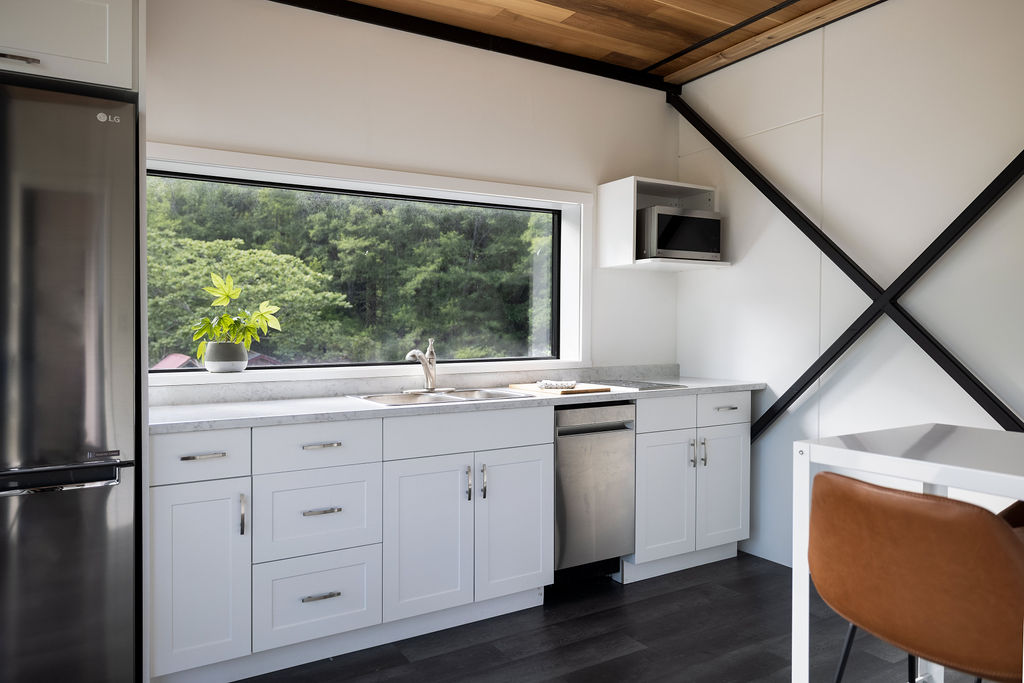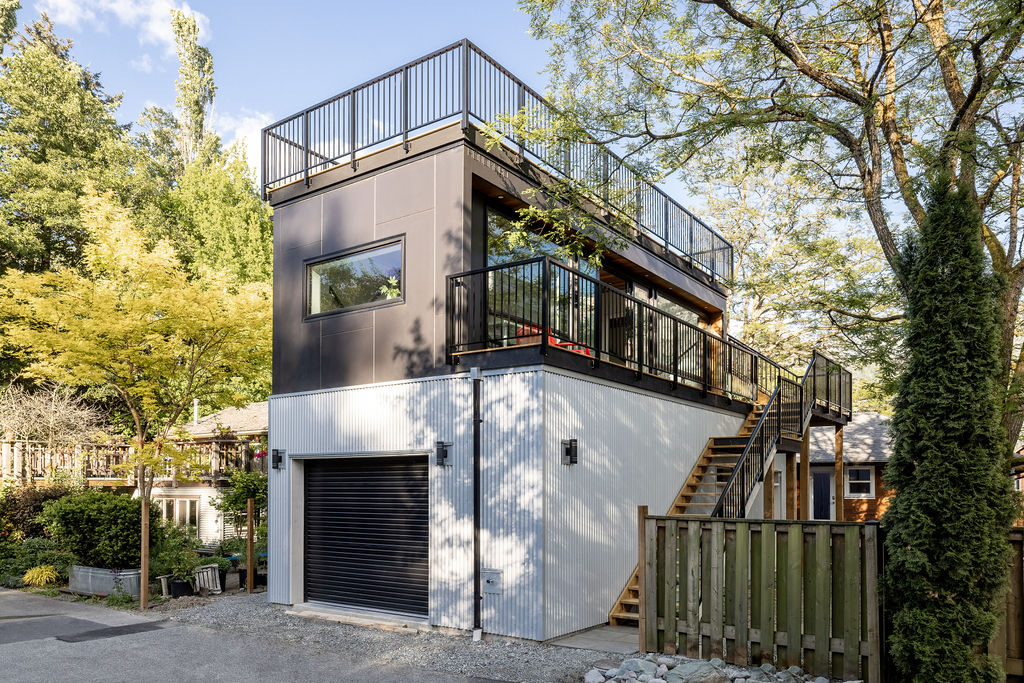Coach houses, also known as carriage homes or laneway homes, are becoming increasingly popular in Squamish and across the Lower Mainland. Not only do they provide rental revenue for the homeowner, they also create much needed rental accommodations in the area.
We’ve now built a few coach houses in the Squamish area and beyond. Some of them have been regular structures, while others have been coach houses built from shipping containers, like the laneway home we built with Honomobo. (See top photo.)
If you’re considering adding a coach house to your property in Squamish or anywhere for that matter, here are a few things you should consider.

Do your homework
1. First things first. Check with your municipality or contractor to confirm that your property can accommodate a carriage house or if your zoning even allows it. No point moving forward otherwise.
2. Read the zoning fine print. Coach houses or any “Accessory Dwelling Units” as they’re referred to in Squamish’s zoning bylaws, need to have one off-street parking space. They are also not to be used as short-term rentals. You can find more information on Squamish zoning bylaws here.
As for sizing, Squamish coach houses can be up to 70 square meters. One important design note, in other BC municipalities, a coach house’s aesthetic needs to mirror that of the main house. That’s not the case in Squamish.
Define the purpose

3. When you start creating the plans for your coach house, be sure to ask yourself the right questions. For example, if it’s going to be a rental unit, then be sure to plan for a rental. Remove emotions of what you would want in the space and focus on marketability and durability. You do not want to have to be replacing the hardwood floors you loved so much because a tenant’s pet scratched them all up.
4. Maximize the rental income. Yes, the home may be small and you may be thinking of building a one bedroom. But when it comes to a coach house, two smaller bedrooms will get you more income than one bigger one.

Build for the future
5. Building science is rapidly progressing and highly energy-efficient homes and net zero are becoming the standard rather than the exception.
So, consider exterior insulation: Make sure your builder has a plan for the air barrier. Avoid installing natural gas and hire an energy advisor to create a report forecasting the building’s energy usage. Once all this is done, be sure to market the low utility costs when you place your rental ad.
6. As with anything, remember that you get what you pay for. Big box store cabinets and plumbing fixtures may seem like the right choice due to their price point. Unfortunately, their quality shows especially in rentals. Plan to have to replace these low end finishes way sooner than you had expected.
If you’re thinking of building a coach house in Squamish, be sure to get in touch. We can help!
